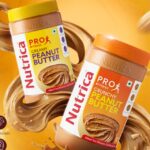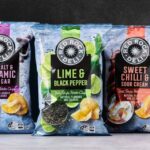Consumer behaviour is changing globally, they are no more interested in any food now containing additives and preservatives. Food manufacturers are studying these new trends and trying to align with those to meet consumer expectations. Rajat K Baisya discusses here five top trends in food and beverage consumption.
In the global market, many new types of food products and recipes are seen to have been launched which are indicative of the new trends in consumer behaviour. Global food manufacturers are studying these new trends and trying to align with those to meet consumer expectations. Small companies are also seen to be more innovative. For example, consumers are not interested in any food now containing additives and preservatives. The trend is more towards fresh and natural. Earlier organic foods used to be sold from regular stores having a separate small section dedicated to organic stuff which are priced relatively higher in comparison to the price of the traditional food. Now we find organic stores are large format-independent stores and prices are competitive and comparable with traditional food. Food Ingredients Company now will have to study these new trends to realign their business. Food ingredients business is researching on new natural ingredients that have remarkable properties to improve the taste, texture and overall acceptability.
Five top trends for food and beverage manufacturers worldwide as identified based on the analysis of insights from some of the global data on research on food and nutrition are quite revealing.
Five top trends in food and beverage consumption
Focus on digestive wellness
Consumers are increasingly seen to be bothered and concerned about nutrition and wellness. Digestion wellness is one such trend. New Nutrition Business and Mintel report that people’s increasing awareness of microbiome science, and how it can affect the overall health and well-being, is changing the way consumers think about food now. And as a result, there is increasing mainstream demand for products that focus on digestive wellness. This trend will help in the growth of probiotics for the reason that the effect of probiotics on the gut microbiome is related to digestive comfort and wellness. Of late, there is increasing evidence that probiotics may play other beneficial roles in areas such as cognition, anti-inflammation, and metabolic health.

Healthy snacking
The second trend is as per the latest research data, snacking has a share of 40% of food and beverage consumption in diverse markets and as such demand for the quality of food and beverages in snacking is also growing. It has observed that snacking trend is evolving and there are no limits to new product development in this category. Healthy snacking options have shown the fastest growth in new product development in the last five years. Consumers are now willing to pay a premium for a healthy and functional snack. In the market, innovative snack foods are seen selling in fancy-sounding names.
Ethical sourcing and sustainability
Consumers’ interest in ethical sourcing and sustainability continues and now evolving to extend throughout the supply chain. According to the global data about 41% of consumers look for ethical or sustainable logos when they shop and about 38% are willing to pay a premium for sustainable materials and about 30% are willing to pay for social responsibility claims. In essence, consumers are now looking for food products that are healthy for them as well as healthy for the world. New Zealand dairy has amongst the world’s lowest carbon footprint and amongst the highest rate of grass-feeding which they leverage to increase consumer confidence in the supply chain. This is, therefore, the third trend in global consumer behaviour in terms of consumption of food products.
Holistic health or total wellbeing
The holistic health or total wellbeing is the other trend in consumer behaviour that was identified by food researchers. Consumers are increasingly mindful of their overall health which is evolving from just physical to total body, mind and emotional wellbeing. As a result product positioning on the basis of demographics such as age and gender alone will become less relevant with lifestyle-based positioning taking its place. In line with this trend it is now expected that there will be more collaborative efforts in market. And as such we expect to see more collaboration opportunities between seemingly disconnected or independent categories. For example, collaboration between foods and gadgets, apparel and beverages etc. There will also be more opportunities to cross-sell and cross-promote, linked by a common goal of helping consumers achieve total wellness. The total wellbeing can thus be considered as the fourth new consumer behaviour now which marketers will have to exploit and explore.
More attention to higher quality
The new product launches tracked by Mintel show an increase of about 39% in food and beverage launches with ’discovery’ as a key message appearing on the pack during 2017 and 2018 which is supposed to arouse the consumer interest and curiosity by including an element of surprise which is a way to activate the new found trend which we can call as adventurous consumption. According to research findings new experiences as part of food and beverage consumption remain very important. Of course, consumers will place value on the authenticity of these experiences in place of generic products and will pay more attention to higher quality, unique and differentiated offerings. This can be seen as the fifth trend in consumer behaviour which will dominate in 2019.

It has been observed that new product variants are more in dairy sector which is more innovative when compared to other processed food sector. Some of the traditional processed food sector seem to have nothing new to offer which can influence consumers. Globalisation of food that started years ago will be given a boost and we will see more ethnic foods being introduced including ethnic dairy products options.
These new trends in global food market will also have its impact in the Indian market of processed food. Marketers have to take these trends into consideration for initiating new product development program in their organisations. Not only that there will be a new trend for identifying product positioning options in the market based on new trends in consumer behaviour and designing, planning and strategizing the marketing efforts to be directed to capture those opportunities.
New start-up companies in the processed food sector will have opportunities to develop products and more particularly in ethnic, dairy and snack food products which are not only distinctive and well-differentiated but also will provide new experiences to the consumers which can help in terms of increasing the success rate of the new start-ups. These new trends can help in terms of the ideation of products which hold promise to succeed in the market place.
‘Processed Food Industry’: The Voice of Food Processing Industry
Processed Food Industry (PFI) is a premier English-language monthly B2B publication (ISSN 09721649) headquartered in New Delhi, catering to the vibrant and ever-evolving food processing industry. While we don’t claim to be the largest or most widely read, our proud legacy of over 27 years—publishing continuously since 1997—has earned us the trust of industry professionals as a reliable source of insights and information.
If your goal is to tap into the booming Indian and South Asian markets to promote your equipment, technology, software, or consumables, PFI is your strategic partner. With our hybrid approach across print, web, and social media, we help you establish strong brand recognition rooted in market relevance. Backed by a team of top-tier technical writers, we’re ready to work closely with you and your customers to craft compelling content that drives results.
India and South Asia’s food industry is expanding rapidly, driven by efficiency and cutting-edge innovations. Don’t miss the opportunity to elevate your brand and engage with this dynamic market. Get our 2025 media kit to fine-tune your marketing strategy, increase your visibility, and convert potential customers into valuable conversations. Additionally, ask for a sample copy of our monthly magazine and experience the quality and relevance we deliver.
Let us help you define your role in the future of the food processing industry.
Have a news or topic to share with industry? Write to us editorial@pfionline.com

















